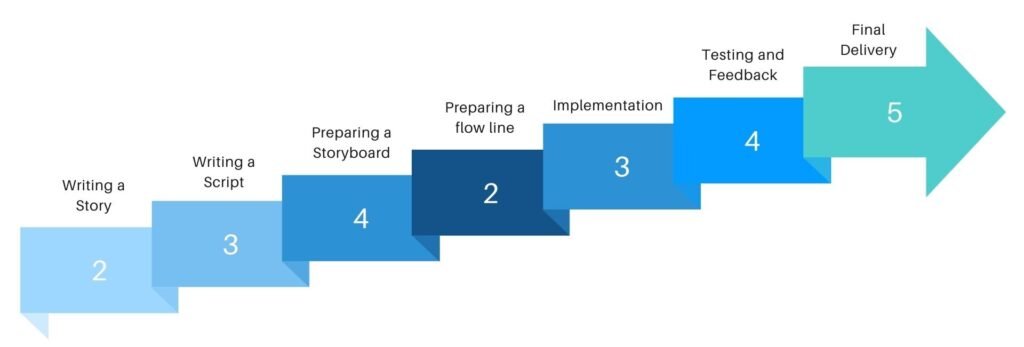Table of Contents
Making Simple Multimedia Presentation with Power Point Text as a Component of Multimedia
Steps for Creating a Multimedia Presentation:
- Choosing a Topic
- Writing a Story
- Writing a Script
- Preparing a Storyboard
- Preparing a flow line
- Implementation
- Testing and Feedback
- Final Delivery

Choosing a Topic
The first topic/task is to choose a topic on which to create the presentation. In principle, one can select any topic/topics which can be explained or demonstrated using various media types are more conductive to multimedia presentation. Use of text should be kept at a minimum. For example, not more than a few lines per page of the presentation when choosing a topic one should make a mental note of how the subject matter should be divided and what entry points should give access to which module. The author shall also decide who should be the target audience further deciding the objectives of the presentation [i.e.] what the audience is expected to learn after going through presentation.
Writing a story
A story describes the overall content of the presentation. The writing style should be textual and should resemble an essay. Within the story, the author can divide the matter into logical divisions like chapters, sections, topics, etc. for better readability and modularization.
Writing a script
Once the overall subject matter has been finalized, the next step is to create a script. A script emphasizes how the subject matter unfolds. While writing a script, the author visualizes the content in terms of frames. For example, what is to be displayed on the first screen? This requires the subject matter of the story be divided into small modules one for each screen. The script may also include other accessory information like how the elements are displayed on the screen.
Preparing a Storyboard
Once the script has been prepared, the author needs to prepare the storyboard. The storyboard depicts what should be the layer of each screen within the presentation. The screen should have an aesthetic feel about them and should be pleasant to look. These are like “key frames” in a video – the story hangs from these “stopping places”.
Preparing a flow line
Along-side a storyboard, the author should also prepare a flow line. A flow line at a glance tells us how the user can access different pages of the presentation.
A flowchart organizes the storyboards by inserting navigation information – the multimedia concept’s structure and user interaction. The most reliable approach for planning navigation is to pick a traditional data structure. A hierarchical system is perhaps one of the simplest organizational strategies.
Multimedia is not really like other presentations, in that careful thought must be given to organization of movement between the “rooms” in the production. For example, suppose we are navigating an African safari, but we also need to bring specimens back to our museum for close examination – just how do we effect the transition from one locale to the other?
Implementation
Implementation means actually creating the physical presentation using required hardware and software. Implementation has a number of sub steps. The first step is the collection of media items. The author can use software to create their own items.
There are two types of implementation software:
- The first type is the editing software, which are used to edit the digitized items.
- The second type is the authoring software; which are used to integrate all the editor media into a single presentation. The output of the authoring software is usually an executable file [exe] which contains its own runtime engine and therefore can be played without the help of any other software.
Testing and feedback
After the implementation phase is completed, an important step of testing and feedback should be done for improving the quality of the presentation. This step involves distributing whole [or] part of the presentation to sections of the target audience and heading the feedback from them about the possible areas which need improvement. Developers always work under various constraints and do not have indefinite time on their hands.
Some multimedia designers use an authoring tool at this stage already, even if the intermediate prototype will not be used in the final product or continued in another tool. User testing is, of course, extremely important before the final development phase.
Final delivery
The final phase in the production schedule is the delivery of the application to be intended client. Usually the runtime version of the application files are copied into a CD-ROM / flash drive and physically handed over to the customer. It is also important for the author to state clearly the hardware and software requirements which should be present on the client machine to run the application smoothly.
You May Like to Browers More




